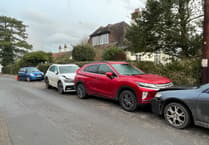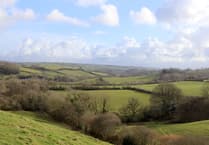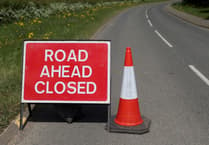THE Rotary Club of Wellington welcomed Rebecca Smith, South West regional public engagement co-ordinator of the Commonwealth War Graves Commission (CWGC) to a recent lunchtime meeting at the Beambridge Inn.
Rebecca gave a fascinating and occasionally moving illustrated talk on the work of the CWGC, which was established officially in 1917.
The commission as part of its mandate is responsible for commemorating all Commonwealth war dead individually, uniformly, and equally, irrespective of military or civil rank, race or creed. Commonwealth military service members are commemorated by name on either a headstone at an identified site of a burial, or on a memorial.
As a result, the commission is currently responsible for the continued commemoration of 1.7 million deceased Commonwealth military service members in 153 countries at more than 23,000 separate burial sites, and the maintenance of more than 200 memorials worldwide.
The commission also commemorates approximately 67,000 civilians who died as a result of enemy action during the Second World War.
It operates through the continued financial support of the member states: United Kingdom, Canada, Australia, New Zealand, India, and South Africa.
Rebecca explained the vast majority of burial sites were pre-existing cemeteries and parish churchyards located in the UK, but the commission had also constructed approximately 2,500 war cemeteries worldwide.
It had also constructed or commissioned memorials to commemorate the dead who had no known grave, the largest of these being the Thiepval Memorial, in France, and Mennin Gate, in Belgium. Apart from a few exceptions, the commission’s cemeteries follow the same design and uniformity all over the world.
This makes the cemeteries easily recognisable and distinguishes them from war graves administered by other groups or countries.
Typically, cemeteries of more than 40 graves contain a Cross of Sacrifice designed to imitate medieval crosses found in churchyards in England.
Cemeteries with more than 1,000 burials typically have a Stone of Remembrance, with the inscription ‘Their name liveth for evermore’.
Every grave is marked with a headstone of a uniform size and design and mark plots of equal size. Each headstone contains the national emblem or regimental badge, rank, name, unit, date of death, and age of each casualty inscribed above an appropriate religious symbol and a more personal dedication chosen by relatives.
Immediately following the First World War, the British Army remained responsible for the exhumation of remains.
Between the Armistice and September, 1921, 204,695 bodies were reburied.
After 1921, no further comprehensive search for bodies was undertaken.
Nevertheless, despite the rigour of the searches, bodies continued to be discovered in large numbers.
In the three years following the conclusion of the general search, 38,000 bodies were discovered. The discovery of remains of First and Second World War casualties remains a common occurrence, with approximately 30 bodies discovered annually.
For example, in 2008, 250 British and Australian bodies were excavated from five mass graves on the edge of Pheasant Wood, outside of Fromelles, in France.
They were interred in the newly-constructed Fromelles (Pheasant Wood) Military Cemetery, the first new Commonwealth War Graves Commission cemetery in more than 50 years.
When the remains of a Commonwealth soldier from the First or Second World War is discovered, the commission is notified and any associated artefacts that may help identify the individual are collected.
The details are then registered and archived at the commission's headquarters in Maidenhead, Berkshire.
All members appreciated Rebecca’s thought-provoking presentation which comes as a timely reminder that Remembrance Day, November 11, will soon be here.
Readers may not be aware that there are 29 War Graves in Wellington Cemetery and many more in the surrounding village churchyards.




